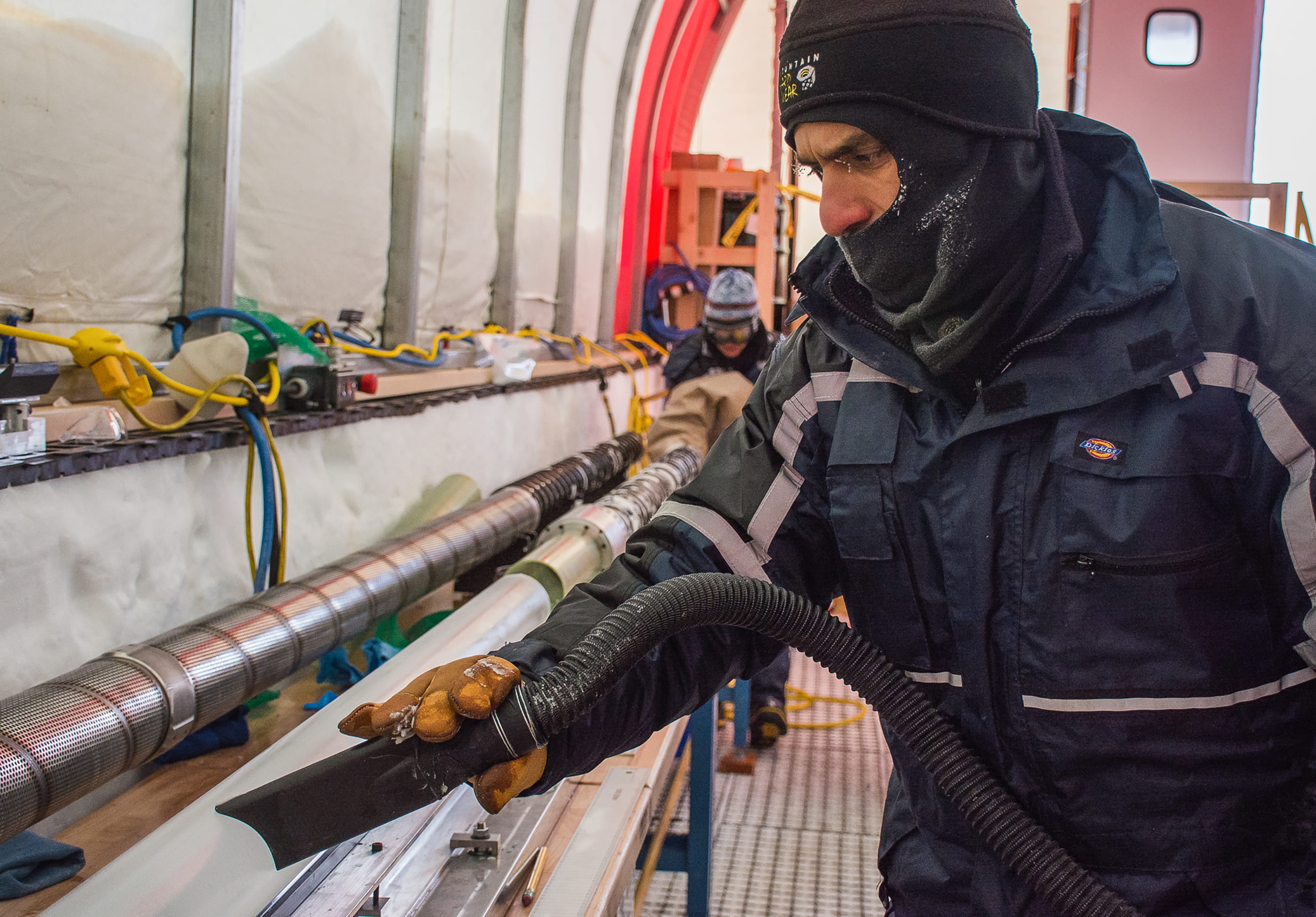Arts trek
Class boldly goes on 1,900-mile mission to explore artworks embedded in the environment

Students who signed up for James Nisbet’s course on postwar American art had no idea that a road trip across the Southwest would be in the syllabus. Thanks to a $100,000 donation to the art history department from UCI alumnus Vince Steckler ’80, Nisbet was able to plan a fully funded travel-study project for his fall ’18 class. He quickly redesigned his curriculum to focus on the land art movement that emerged in the 1960s and 1970s.
Rejecting the rampant commercialization of art during this period, land artists crafted works in and of the outdoor environment, often using natural materials such as soil, rocks, vegetation and water. Their creations were usually massive, since landscapes were manipulated to produce stunning and complicated visuals. Earth art, as it’s also known, tends to be in remote locales – the deserts of the U.S. Southwest among them. Nisbet says that many land artists viewed the time spent getting to these isolated areas as part of the art itself.
“Some of them were looking to get away from the gallery system,” says the associate professor of art history and visual studies. “They went to places that were decidedly not in cities to make works they called ‘site-specific’ – not just in that you couldn’t move them, but in that they belonged only in the places where they had been made.”
Off-road trip
The four-day, 1,900-mile trek took place over Thanksgiving weekend. It was optional; students could elect to do an alternative research project. Nevertheless, 25 undergraduates and several graduate students joined the caravan.
On Friday morning, they arrived at the El Mirage dry lake bed in San Bernardino County to see the location of works that don’t exist anymore. Drawings rendered in chalk, in black asphalt primer and even by the spinning tires of a motorcycle have been blown away over time. In fact, it was so windy the day the group visited that they could barely hear each other speak. It illustrated the fact that land art – due to its exposure to the elements – could be ephemeral. Students were encouraged to instead meditate on the Mojave Desert site itself, its roles and evolution.
Afterward, Nisbet and two graduate students drove their two 15-passenger vans and one minivan to Nevada’s Moapa Valley to view Michael Heizer’s “Double Negative” (1969), which entails two trenches cut into a scallop on top of a mesa. They were able to observe the quintessential work just as the sun was setting.
Hidden treasure
Nisbet’s favorite moment, however, occurred the next day, when the class explored Walter De Maria’s “Las Vegas Piece” (1969) near the ghost town of Elgin, Nevada. “You go on the highway and you turn left and you drive for 30 miles on dirt roads, and then at an exact spot – there’s no marker – you park the van and you walk into the desert for a couple hundred yards and you find a stone,” Nisbet says.
The artwork consists of four intersecting, bulldozer-etched lines in the Tule Desert, two of them a mile long and the other two half a mile long, forming a square with half-mile lines extending from two corners. De Maria was adamant that there be no drawings or aerial photographs of it; people had to experience the creation for themselves. But with the passage of time, it has become difficult to discern.
“I’ve been studying land art for over a decade,” Nisbet says. “I’d tried twice before to find ‘Las Vegas Piece’ and had not succeeded, so this was my first time to actually find it.”
Eco-conscious art
Environmental issues are manifested in some of the works. That night, the contingent made it to Utah and visited the most recent land art on its itinerary: Patricia Johanson’s “The Draw at Sugarhouse” (2014). Comprising trails, a bicycle and pedestrian highway crossing, a wildlife migration corridor and landscape features reflecting the cultural history of the Salt Lake Valley, the project is aesthetically pleasing and serves a practical purpose as a flood channel.
On Sunday morning, Nisbet’s group gathered at the Great Salt Lake to view Robert Smithson’s “Spiral Jetty” (1970), an enormous coil built entirely of mud, salt crystals and basalt rock that originally jutted out from the northern shoreline. The pink, salt-rich lake water barely reaches the sculpture anymore, likely due to climate change.
The Anteaters ended the day at Nancy Holt’s “Sun Tunnels” (1976) in Utah’s Great Basin Desert. It consists of four massive concrete tubes arranged in an X pattern, each drilled with holes matching a different constellation. Two of them align with the setting and rising sun during the summer solstice, and the other two line up during the winter solstice.
Active learning
“Some students picked up on how the works invite a kind of playfulness,” Nisbet says. “It’s the perfect example of something you could never learn from a textbook. They discovered what light and shadow do as you move through ‘Sun Tunnels.’ Other students noticed how you can play with sound.”
The long drives and large vans allowed for group discussions about the art pieces and sites they had visited. Even the music playlists enhanced the experience, as students listened to entire albums from the years of each work’s genesis.
An unexpected result of the trek was how it fostered strong bonds among participants. It also let them disconnect from the stressors of student life while still engaging in meaningful intellectual pursuits.
Audrey Hernandez Peterson, a second-year art major who later created a painting inspired by the journey titled “22 Cattleguards,” says: “It felt like we existed in a vacuum. The energy with my classmates and enthusiastic professor was so immersive that I found I didn’t completely care what was happening outside the trip. There was a constant lightness in my chest and complete peace as I was able to understand the affect of the land as an artwork itself.”









